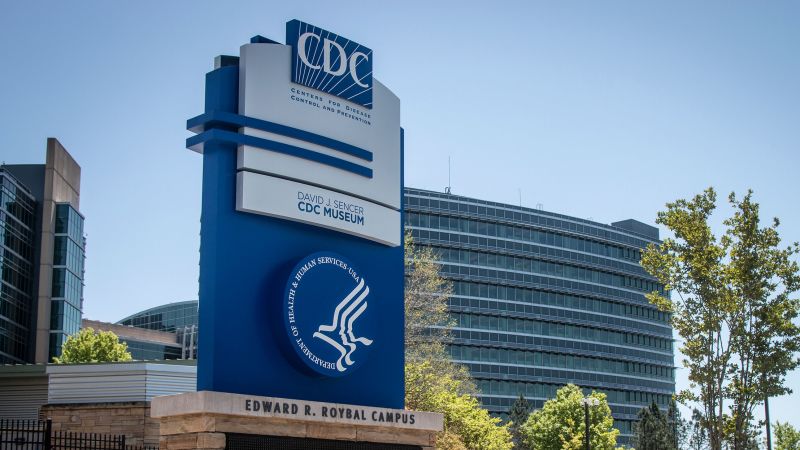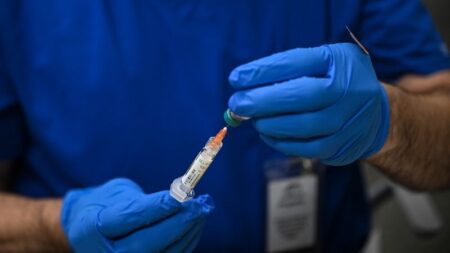The ongoing debate surrounding vaccines, particularly thimerosal, includes a contentious presentation this week by Lyn Redwood, a prominent figure associated with the anti-vaccine group, Children’s Health Defense. Redwood, a trained nurse practitioner with expertise in pediatrics and family medicine, is set to address the newly appointed vaccine advisers of the US Centers for Disease Control and Prevention (CDC). The focus of her presentation is notably on the use of thimerosal in flu vaccines— a topic that stirs significant controversy. A CDC official, who requested anonymity, confirmed Redwood’s participation, underscoring the tension surrounding the subject matter.
Thimerosal, a mercury-containing preservative historically utilized in vaccines, raised safety concerns over the years, leading to its removal from most vaccines. Although studies have consistently shown no direct association between thimerosal and neurodevelopmental disorders, including autism, groups like Children’s Health Defense actively promote claims that link vaccines to autism. Redwood’s scheduled discussion and subsequent vote on thimerosal raise apprehensions within the public health community about the possible revival of discredited theories.
Historically, thimerosal was phased out due to prevalent unease about mercury exposure despite the fact that studies established that the ethylmercury in thimerosal is excreted from the body much more rapidly than the methylmercury found in certain fish. Nonetheless, a minority of flu vaccines, particularly those in multidose vials, still contain thimerosal today, accounting for roughly 4% of flu vaccines administered in the United States. However, most pediatricians opt for single-dose vials or prefilled syringes devoid of thimerosal. Dr. Sean O’Leary, a pediatrician at Children’s Hospital Colorado and liaison to the Advisory Committee on Immunization Practices (ACIP) for the American Academy of Pediatrics, expresses disbelief that any pediatric practice currently utilizes the multidose influenza vaccine that includes thimerosal, emphasizing the puzzling nature of thimerosal being included on the ACIP agenda for discussion.
What sets this particular meeting apart is Redwood’s notable role as a presenter. Typically, ACIP presenters are experts who have spent considerable time evaluating the evidence surrounding a subject matter. The sudden addition of the thimerosal discussion just days prior to the meeting raises questions about the depth of preparation and the specific nuances that will be addressed. Redwood declined to offer comments regarding her impending presentation, leaving many anxiously awaiting the dialogue.
Redwood’s background in the vaccine debate is multifaceted and complex. Her claims regarding the adverse effects of thimerosal and its supposed connections to autism stem from personal stories, including her assertion that her son had received excessive mercury exposure from infant vaccines, which she believes led to his autism diagnosis. While it is important to acknowledge individual experiences, many experts contend that her views exhibit a bias and that they may not be congruous with current scientific consensus. As noted by Dorit Reiss, a law professor specializing in vaccine law, Redwood’s history reveals potential conflicts of interest that could cloud her objectivity.
The ramifications of this meeting are significant, particularly given Children’s Health Defense’s broader mission to challenge established perceptions of vaccines. Their recent initiatives include events that portray a supposed cover-up by health organizations like the CDC regarding vaccine safety. Despite the aggressive pursuit of evidence against thimerosal, the consensus from myriad studies, including those referenced by the CDC, indicates no proven harm from the minuscule quantities of thimerosal once used in vaccines. This notion persists alongside the broader narrative that is being cultivated against vaccines.
Nevertheless, public opinion regarding the safety of thimerosal is often influenced more by mythology than by science. Dr. O’Leary emphasizes that the evidence amassed over the years supports the conclusion that thimerosal is safe and remains utilized in vaccines in many countries around the world. Thus, it appears that despite the CDC’s longstanding assurance of thimerosal’s safety and the decline of its use in the US vaccine supply, certain narratives persist in creating and fueling skepticism regarding vaccine safety.
In conclusion, Redwood’s presentation at the CDC represents a confluence of enduring controversies regarding vaccine safety, public health policy, and individual narratives surrounding personal health outcomes. The landscape of vaccine discourse is shifting and will continue to evolve with ongoing studies and public engagement; however, grounded in scientific evidence, the systematic dismantling of discredited claims remains a critical aspect of public health efforts.












